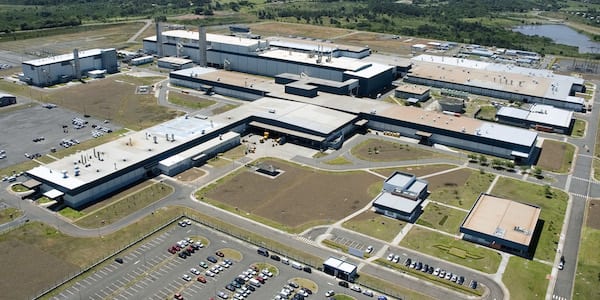
Ten strategic planning problems hoshin kanri can solve
FEATURE – Is your organization experiencing any of the strategic planning problems described in this article? If so, it might be time to tap into the potential of hoshin kanri.
Words: Flávio Augusto Picchi, Vice President, Lean Institute Brasil
Organizations on a lean journey experience a giant leap forward whenever leadership shows they understand that lean thinking is more than just operational improvements and realizes the enormous potential that applying it at strategic level can unlock.
Lean-style strategy deployment is known as hoshin kanri (or simply hoshin) – a concept developed in Japan in the 1960s as part of Total Quality efforts and effectively incorporated into the lean approach.
Hoshin aligns leadership horizontally and vertically, connecting problem solving and improvement initiatives at different levels of the firm with organizational goals, thus avoiding dispersed efforts. Some of its elements (which become even more effective when applied in combination with A3 thinking) include the alignment around a few priority objectives and the rigorous use of PDCA. We can say, in a way, that hoshin is an effective way to translate a corporate strategy and its corresponding objectives into concrete actions that people at the front-line can carry out to contribute to the achievement of those goals.
While hard to implement due to the leadership mindset change it demands, hoshin has proven to be a much stronger approach to strategic planning than any traditional method an organization can use. In particular, it is interesting to analyze how it can help us to overcome 10 problems that we commonly encounter when we plan our strategy in a traditional way.
PROBLEM 1: FOCUSING ON NUMBERS, NOT ACTIONS THAT WILL BRING RESULTS
Many organizations spend most of their annual planning cycles focusing on the budgeting process. Several iterations of spreadsheets travel between units and the corporate headquarters, in a bid to establish revenues, costs and expenses, results, investments, etc. for the following year. This process consumes much of the top managers' attention and focus, limiting the amount of time they can dedicate to effectively discussing strategy, which is often defined only after the budget is fully established. As a rule, managers yield and accept cost cuts or expected revenue increases without having the slightest idea of how those goals can be achieved.
Conversely, hoshin kanri calls for discussion of goals and targets that is not disconnected from the formulation of guidelines and the identification of those process improvements that will allow the organization to reach the expected results.
PROBLEM 2: ATTENTION TO THE SELECTION OF STRATEGIES, BUT NOT ON HOW TO DEPLOY THEM
Traditionally, the strategic planning process has a very strong focus on selecting strategies: companies tend to develop sophisticated processes with consultants, analyze possible scenarios, and define the future focus of their activity that will ensure their growth. As well defined as your direction can be, however, it can easily fail to take you to your destination when deployment problems occur (which they always do). If we look at this common situation in terms of PDCA, we see that the important planning (P) phase is thoroughly covered, but that the doing (D) doesn't get enough attention and that the checking and adjusting (C and A) phases are simply absent.
While hoshin also places a lot of importance on the path and direction our strategy should follow, it also emphasizes how critical the deployment of that strategy is, and how our objectives will be achieved.
PROBLEM 3: DISPERSED ACTION PLANS
We often see companies in which strategic planning generates dozens of disjointed action plans with little to no visibility and traceability for larger, organizational goals.
With hoshin kanri, management establishes – based on the company's vision, mission, and values – goals and long-term strategies (5 to 10 years, for example) and, from that, sets the True North, explaining the few priorities in each annual cycle that will drive the company towards its future state.
These goals, targets, and priority actions are deployed using A3 thinking: the True North generates strategic A3s, and these, if necessary, generate second-level A3s. This process requires intense nemawashi (communication, involvement, debate and consensus building).
PROBLEM 4: PROCESS ARE ALMOST EXCLUSIVELY TOP-DOWN
The traditional approach to strategizing is mainly top-down: goals – and actions, too – are established by top managers and communicated to the teams.
The lean approach to strategy deployment is different: hoshin combines top-down, bottom-up, and horizontal interactions in a process known as catchball. Vertical alignment is not one-directional: leadership cascades guidelines, goals, targets, and resources, and in return, teams offer initiatives and improvement proposals on how to follow guidelines, achieve goals, bring results, etc. Horizontally, targets and actions are checked between different strategic A3s and organizational areas, to avoid conflict and boost synergies.
Through catchball, teams at various organizational levels not only contribute to the execution of the strategy, but take also part in its formulation. In this sense, it would make more sense to talk about "strategic alignment" rather than "strategy deployment."
PROBLEM 5: CONFLICTING GOALS
It is not uncommon to observe companies using dozens of metrics and targets established predominantly in organizational silos. This, combined with a predominantly top-down approach and an excessive focus on numbers rather than on how to get them, often produces conflicting goals for different parts of the company.
Together with the True North, the processes of catchball (alignment) and nemawashi (consensus building) can act as countermeasures preventing this issue.
PROBLEM 6: PLANNING LONG-TERM ACTIONS WITHOUT IDENTIFYING WHAT NEEDS TO CHANGE TODAY
Strategic planning is, first of all, the process of making decisions for the future. There is no doubt that the exercise of defining in detail new products, business models and market niches is crucial, but not if it is done at the expense of the analysis of the current process (it happens often in traditional organizations).
We must give the current process the necessary attention, or it will be impossible for us to influence future outcomes – let alone build stability. For example, delivery problems can damage a company's reputation, deteriorating its relationship with customers and hampering its ability to introduce new products. Today's operational deficiencies can have long-lasting consequences, and it is important not to ignore them. If we do, we risk building our strategy on very shaky foundations.
Like every other lean improvement effort, hoshin always begins with knowing the current situation and understanding the problems, which can only be done through data gathering and analysis. Leaders often try to avoid gemba walks, because they take them out of their comfort zones and force them to face up to problems, but knowing the risks you are encountering by "going see" is the only way to minimizing their effect.
PROBLEM 7: JUMPING TO SOLUTIONS WITHOUT KNOWING WHAT'S WRONG
In traditional organizations, whenever managers from different areas are asked to make proposals for the strategy going forward, these tend to be biased towards their silos and to entail some kind of new investment (people, space, equipment, and so on). This is a natural expression of our tendency to jump to solutions, even when it is not clear what problems we are trying to solve.
The use of A3s in the hoshin process prevents all this from happening: as a form of problem solving based on the scientific method, A3 thinking is sure to generate countermeasures that effectively solve our problems, lead to faster and sustainable results, and demand lower investment (if any).
PROBLEM 8: TRANSFERRING ACCOUNTABILITY FROM LEADERS TO SUPPORT AREAS
In some companies, functional leaders (such as managers and directors) are too busy putting out fires to give priority to discussing the future of the business. They participate in the planning process occasionally, leaving it to specific support areas of the business, such as Strategic Planning Department and the Project Management Office. This can be seen as a "push system," in which support areas keep trying to "push" the planning process and the execution of planned actions to functional leaders. If something goes wrong, it is not rare to see those leaders blaming support areas, as if they had no responsibility.
Hoshin, like everything else in lean thinking, follows a different logic: pull. The CEO encourages directors to take the initiative by establishing a challenging True North and pulls from them as they take charge of the process and, in turn, pull from their teams and support areas to make sure the actions necessary to deploy the strategy are planned, executed, and results are achieved. Management responsibility to lead the hoshin process and its implementation cannot be delegated.
PROBLEM 9: DEVELOPING PEOPLE IN A DISCONNECTED WAY FROM THE PLANNING PROCESS
Each company is at a different stage of people development, depending on their lean maturity. The most advanced ones seek a connection between developing employees' capabilities and the company's strategic priorities, while less mature organizations tend to offer a bunch of training options and set training-hours goals that are disconnected from the strategy. Needless to say, the latter is nothing but waste.
Few organizations realize that the strategic planning process is in fact a unique opportunity for people development – which is the premise of hoshin kanri. That's what makes A3 thinking so important: it provides a framework for developing problem solvers while keeping a strong focus on business needs. In a lean organization, leaders strive to ask the right questions – which will encourage their teams to think and solve problems scientifically – instead of giving answers.
PROBLEM 10: POOR EXECUTION
The combination of the aforementioned problems can only generate further difficulties for the organization: low commitment, a limited execution rate, lack of monitoring, lack of learning – the C and A parts of PDCA, so to speak. In most cases, few people are able to tell you how the execution of the dozens of plans generated in the previous cycle is progressing.
Conversely, hoshin builds consensus and commitment right in the planning phase, which is reflected in the level of detail included in plans and in the thoroughness of follow-up processes that have been agreed upon by everyone involved. Systematizing the checking and adjusting phases – by means of visual control rooms (obeya), monitoring stardards that connect different levels of the business, and other practices – ensures the necessary discipline in the execution of the organizational strategy.
If you recognize any of these problems in the strategic planning activities your organization carries out, it may be a good time to consider applying hoshin kanri to bring your lean transformation to a new level of maturity. After all, it is the only way you'll be able to become a truly lean enterprise.
This article is also available in Portuguese here and in Hungarian here.
THE AUTHOR

Read more


FEATURE – For the first article in our series on the Halfway transformation, we asked the Sales team to tell us about how they apply lean to selling cars in a challenging social context.


INTERVIEW – We speak with Sérgio Caracciolo of General Motors do Brasil about the carmaker’s approach to lean, its struggles, and its lessons learned.


FEATURE – René Aernoudts discusses how to use standardized work in an organization, providing a lowdown of the techniques available to the lean practitioner.


FEATURE – This article explores the concept of “value network”, emphasizing the importance of looking at lead-times and value creation in a more holistic way.

